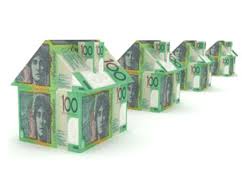 There are around 9.6 million dwellings in Australia and at any time there are about 250,000 properties for sale.
There are around 9.6 million dwellings in Australia and at any time there are about 250,000 properties for sale.
But not all properties make good investments!
In fact, less than 2% of the properties on the market currently are “investment grade.”
Of course, any property can become an investment property.
Just move the owner out, put in a tenant and it’s an investment, but that doesn’t make it “investment grade”.
WHAT MAKES A GOOD INVESTMENT?
Things to look for in any investment are:
- strong, stable rates of capital appreciation;
- steady cash flow;
- liquidity – the ability to take my money out by either selling or borrowing against my investment;
- easy management;
- a hedge against inflation; and
- good tax benefits.
SO HOW DO YOU MAKE MONEY FROM AN INVESTMENT?
Well…property investors make their money in four ways:
- Capital growth – as the property appreciates in value over time
- Rental returns – the cash flow you get from your tenant
- Accelerated or forced growth – this is capital growth you “manufacture” by adding value through renovations or development, and
- Tax benefits – things like negative gearing or depreciation allowances.
Note that Capital Growth is the most important factor of all.
WHY DO MOST PROPERTY INVESTORS FAIL?
They never achieve the financial freedom they aspire to and this is, in part, due to the fact that they follow the wrong strategy – many chase cash flow.
Now , of course, cash flow is the ultimate aim goal. But it can only be once you’ve built a sufficiently large asset base of “investment grade” properties, meaning your investment journey will comprise three stages:
- The Accumulation Stage – when build your asset base (net worth) through capital growth of well-located properties. You can speed up your wealth accumulation through leverage, compounding, time and “manufacturing” capital growth through renovations or development. You then move on to the…
- Transition Stage – once you have a sufficiently large asset base you slowly lower your loan to value ratios so you can progress to the…
- Cash Flow Stage – when you can live off your property portfolio.
The safest way through this journey, which will obviously take a number of property cycles, is to ensure you only buy properties that will outperform the market averages with regards to capital growth.
NOT ALL PROPERTIES ARE “INVESTMENT GRADE.”
So less than 2% of properties on the market are investment grade.
While there are a lot of properties built specifically built for the investor market – think the many high rise new developments that are littering our cities – most of these are not “investment grade.”
Some would call these properties “investment stock” – they are what the property marketers and developers sell in bulk to naïve investors, but they are not “investment grade” because they have little owner occupier appeal, they lack scarcity, they are usually bought at a premium and there is no opportunity to add value.
ON THE OTHER HAND, INVESTMENT GRADE PROPERTIES:
- Appeal to a wide range of affluent owner occupiers
- Are in the right location. By this I don’t just mean the right suburb –one with multiple drivers of capital growth – but they’re a short walking distance to lifestyle amenities such as cafes, shops, restaurants and parks. And they’re close to public transport – a factor that will become more important in the future as our population grows, our roads become more congested and people will want to reduce commuting time.
- Have street appeal as well as a favourable aspect or good views.
- Offer security – by being located in the right suburbs as well as having security features such as gates, intercoms and alarms.
- Offer secure off street car parking.
- Have the potential to add value through renovations.
- Have a high land to asset ratio – this is different to a large amount of land. I’d rather own a sixth of a block of land under my apartment building in a good inner suburb, than a large block of land in regional Australia.
The bottom line is buying the right ‘investment grade’ property is all about following a proven blueprint that successful investors follow.
This increases your chance of better financial returns and reduce your risks of getting caught out as our property markets move into the next, less buoyant stage of the property cycle.
HOW DO YOU KNOW WHICH STEP TO TAKE NEXT?
Get in touch and we can help get started
